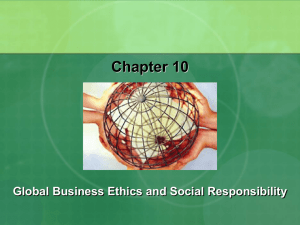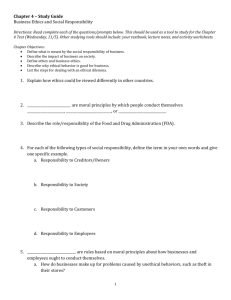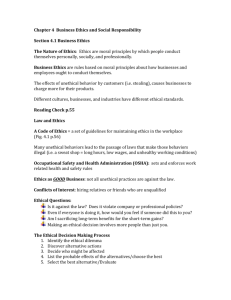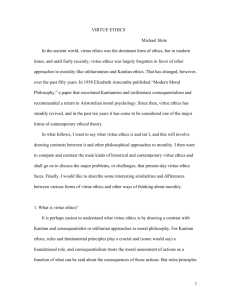here
advertisement
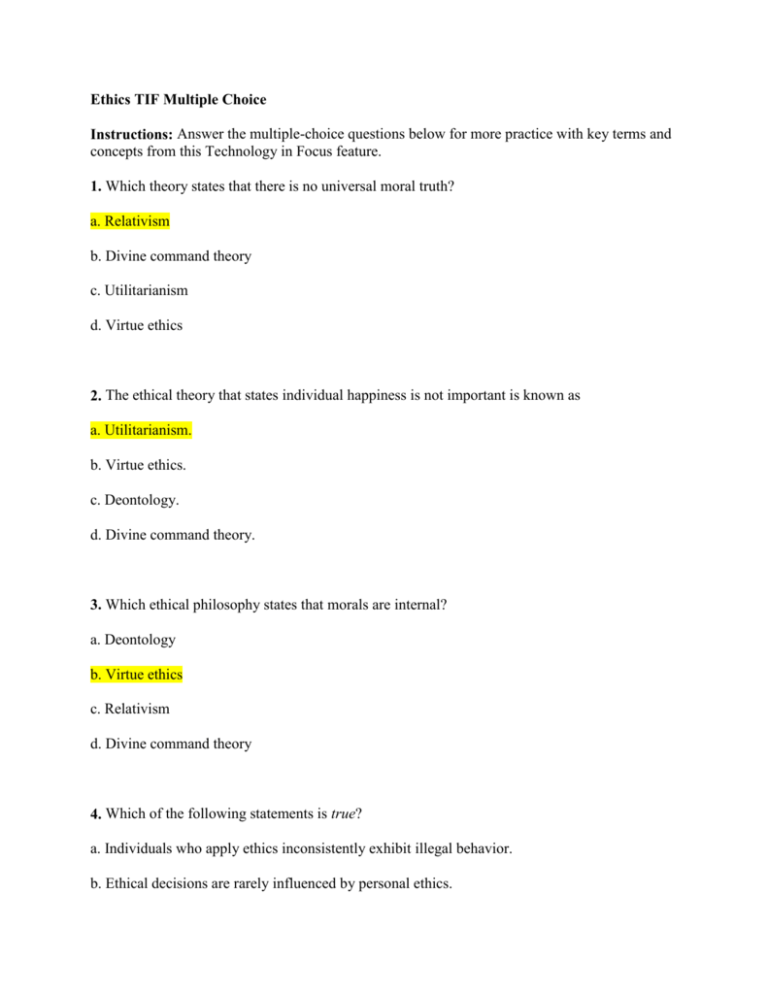
Ethics TIF Multiple Choice Instructions: Answer the multiple-choice questions below for more practice with key terms and concepts from this Technology in Focus feature. 1. Which theory states that there is no universal moral truth? a. Relativism b. Divine command theory c. Utilitarianism d. Virtue ethics 2. The ethical theory that states individual happiness is not important is known as a. Utilitarianism. b. Virtue ethics. c. Deontology. d. Divine command theory. 3. Which ethical philosophy states that morals are internal? a. Deontology b. Virtue ethics c. Relativism d. Divine command theory 4. Which of the following statements is true? a. Individuals who apply ethics inconsistently exhibit illegal behavior. b. Ethical decisions are rarely influenced by personal ethics. c. Unethical behavior is always illegal. d. Life experience affects an individual’s personal ethics. 5. Unethical behavior a. is the same as illegal behavior. b. is based on civil disobedience. c. is different from illegal behavior d. is governed by specific laws passed by legislative bodies. 6. The field of psychology that theorizes that happiness results from ethical living is known as a. principled psychology. b. positive psychology. c. moral psychology. d. affirmative psychology. 7. Which system of ethics is most widely agreed upon to be the best system? a. Utilitarianism b. Relativism c. Virtue ethics d. There is no universally agreed-upon best system. 8. What should you do if you spot unethical behavior at your workplace? a. Nothing as long as the behavior is legal. b. Report it to the police. c. Follow company procedures for reporting unethical behavior. d. Start looking for a new job. 9. Which of the following actions would not help to identify your personal ethics? a. Describe yourself. b. Identify the influences of your work environment. c. Conduct a genealogic study of your extended family. d. Prepare a list of values that are most important to you. 10. Ethical decisions in business affect which of the following? a. The employees b. The business’s clients and customers c. The suppliers and financial lenders d. All stakeholders


